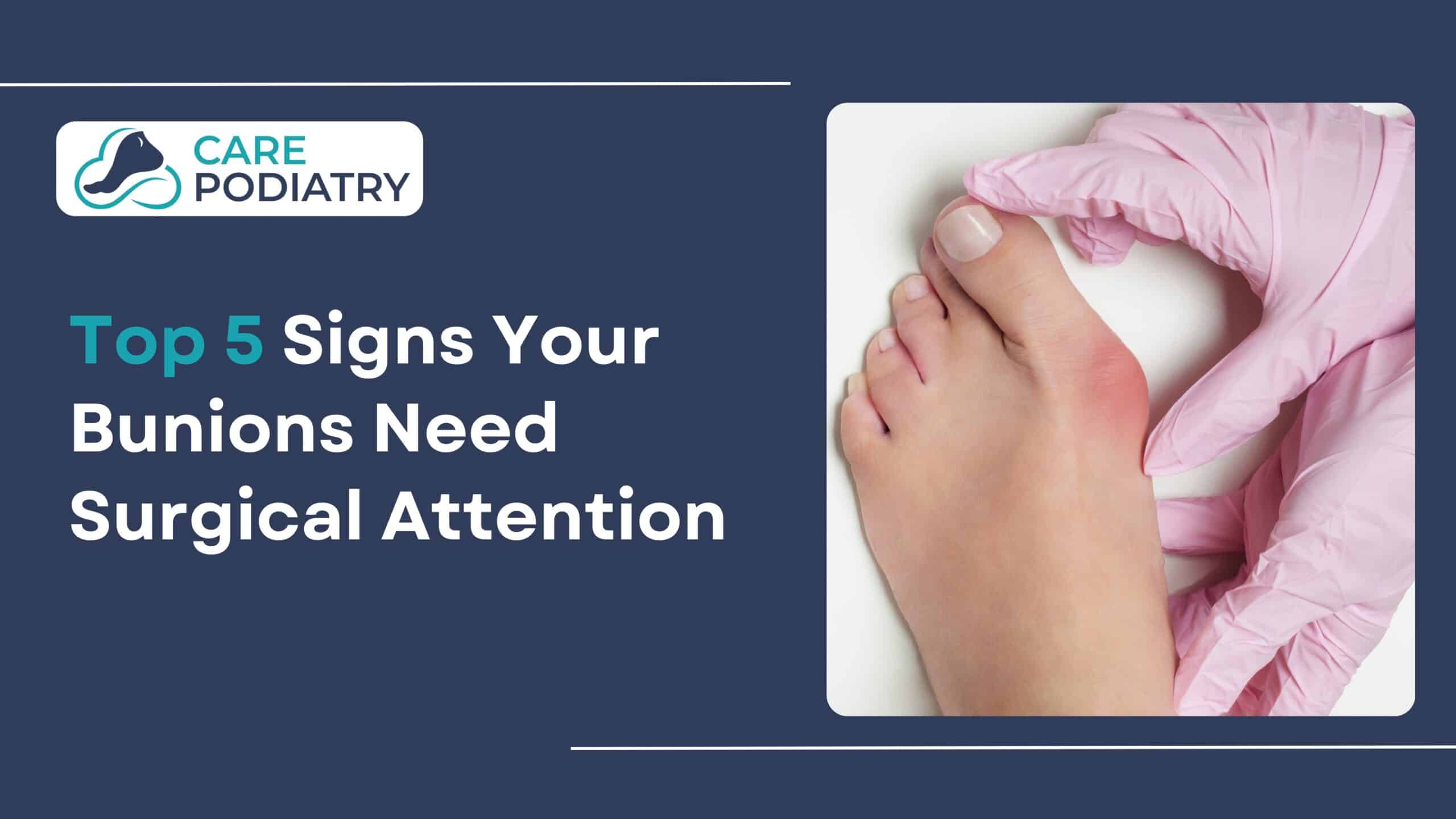Bunions affect nearly one in three adults over 65, yet many ignore symptoms until the pain becomes unbearable. While conservative treatments like metal-free bunion correctors can help, they don’t always solve the root issue.
This blog discusses the five obvious symptoms that it may be time to think about surgery and how best to do so with the knowledge of the experts.
When Natural Remedies Aren’t Enough
There’s an increased popularity in alternate bunion solutions, particularly metal-free options, which cause minimal discomfort as well as reduce irritations and can reposition the toe in a gentle manner. These solutions prove to be effective for many patients, especially in the early stages.
But what do you do when shy despite conservative treatment, your pain persists? This is because at a certain point, bunions might be so severe to the extent that surgery will not only be an option but the only solution.
Well then, how do you know when you have that point? Let us discuss five of the most characteristic indications that one should stop waiting and think about a surgical intervention.
1. Persistent Pain That Affects Daily Life
Daily pain in your bunion, even when resting or wearing supportive shoes, is a very high indicator of structural damage that will not improve except with surgery. Pain during the early stages is typically experienced after long walks or wearing tight shoes. However, later, it changes, and the pain appears all the time, disturbing sleep, exercise, and even some small errands.
Pain disrupting you in doing daily commutes such as grocery shopping, standing in the kitchen, or dog walking is a red flag. Your bunion is probably no longer a mere cosmetic matter at this stage, and it might require correction through surgery.
2. Limited Toe Mobility
Your large toe must be mobile and flexible. But, by slowly stiffening the joint at the bottom of the big toe (the metatarsophalangeal joint), bunions may result in limited movement.
In the long run, this stiffness will limit your motion in bending the toe, squatting, or walking without an obligation of awkward compensation, which may result in injuries like knee pains, hip pains, and lower back pains.
Here’s how bunion progression affects movement:
| Bunion Stage | Toe Flexibility | Pain Level |
|---|---|---|
| Stage 1 – Mild | Normal | Mild, occasional |
| Stage 2 – Moderate | Slightly restricted | Moderate with activity |
| Stage 3 – Severe | Very limited | Daily, persistent |
| Stage 4 – Arthritic | Nearly frozen joint | Chronic, possibly radiating |
| Stage 5 – Deformity | Joint dislocation | Severe and disabling |
If you find yourself avoiding certain movements or relying on your other foot more heavily, it’s time to consult a podiatrist about surgical options.
3. Shoes No Longer Fit Properly
Bunions make the first toe bend towards the lesser toes, spreading the forefoot. This may make it hard, and even impossible, to put on normal shoes. You may end up purchasing larger sizes, wearing loose-fitting footwear, or going to the extent of cutting your shoes so that you can get some relief.
Your bunion will start impacting your lifestyle and mobility at large when it restricts your choice of footwear. Nobody should ever need to compromise on style, comfort, and functionality to stay pain-free. This is an obvious indication that non-surgical treatment might not be sufficient anymore, and correction of your foot could come through surgery.
4. Development of Secondary Issues
Developed bunions do not only impact your big toe. They may result in a ripple effect affecting other areas of your foot and the body. Other typical secondary complications are:
- Hammertoes – caused by misalignment of other toes
- Calluses and corns – due to increased friction
- Metatarsalgia – pain in the ball of the foot
- Postural issues – from walking improperly to reduce bunion pain
If you’re treating more than just the bunion, or if orthotics, ice, and topical treatments aren’t helping, you’re dealing with a more systemic problem that may require surgery to prevent further damage.
5. No Successful Treatment with Conservative Therapy
The majority of the podiatrists prescribe all non-invasive measures before thinking of surgery. These include:
- Orthotics
- Physical therapy
- Non-metallic bunion splints
- Anti-inflammatory medications
- Footwear adjustments
However, in less than 6 to 12 months of trying these without any significant improvement, you may have an advanced bunion that requires interventional treatment. Metal Free Surgery then works like a realistic next phase, not due to hurry, but because of a need to have a quality of life.
When to Talk to a Podiatrist
Neglecting your bunion may cause damage to the joint, compression of nerves, and chronic disability. In case you can identify with any of the above five signs, a podiatrist should be consulted.
We provide the latest metal-free surgery with the best recovery and comfort in mind at Care Podiatry.
Conclusion
It might seem like a tremendous step towards change, but surgery can be the best solution to regain your mobility and get rid of pain. When your bunion is interfering with your lifestyle, delay no longer.
Care Podiatry will be there to assist you in deciding your treatment option- how to conserve as well as surgically. Take the first step to pain-free feet today.
Need relief that lasts? Book a bunion evaluation with Care Podiatry today and explore your options, from natural care to latest surgical options.
Frequently Asked Questions
How to know when a bunion needs surgery?
When conservative measures cease to effectively alleviate pain, and your work as well as your quality of life have been impacted, particularly when there is an unpleasant side-effect of stiffness, swelling, or secondary foot problems, then it is time to think about surgery regarding bunions.
What are the 5 stages of a bunion?
A severe bunion causes daily pain, visible toe overlap, restricted toe movement, and footwear difficulties. If you struggle with walking or develop other foot issues, it’s likely severe.
How do I know if my bunion is severe?
Prescription oral antifungals combined with topical treatments offer the best long-term solution. Consistent follow-up care helps prevent recurrence.
What is the last stage of a bunion?
In the last stage, the toe joint may become dislocated or arthritic. The toe often overlaps others, causing intense pain, instability, and deformity that usually requires surgical correction.
Can a bunion be an emergency?
Yes, your bunion can require immediate treatment in case the pain is abrupt and sharp, you have indicators of infection (such as redness or fever), or the condition makes it difficult to walk.



